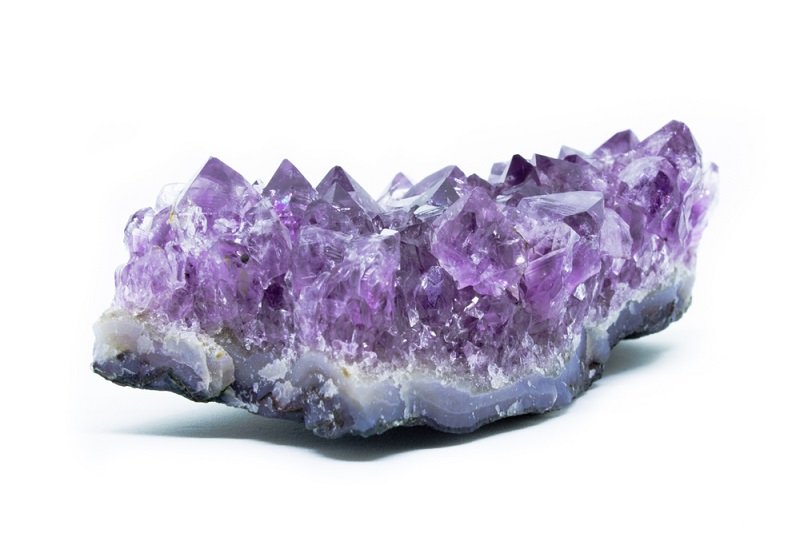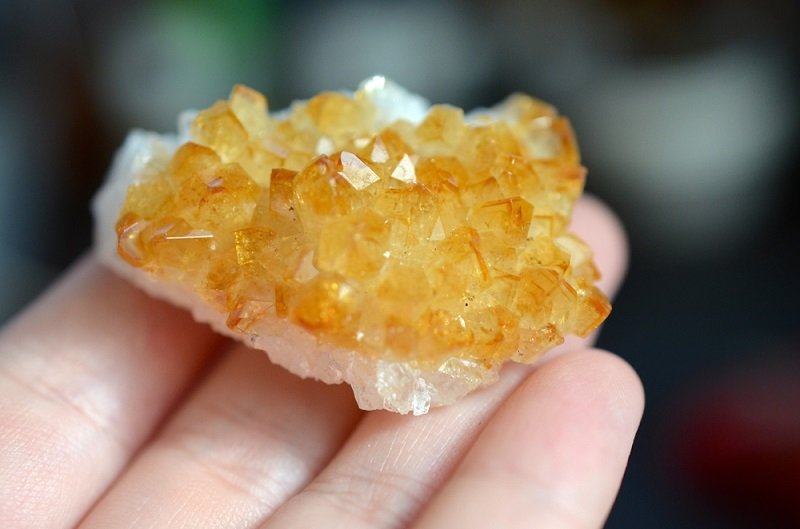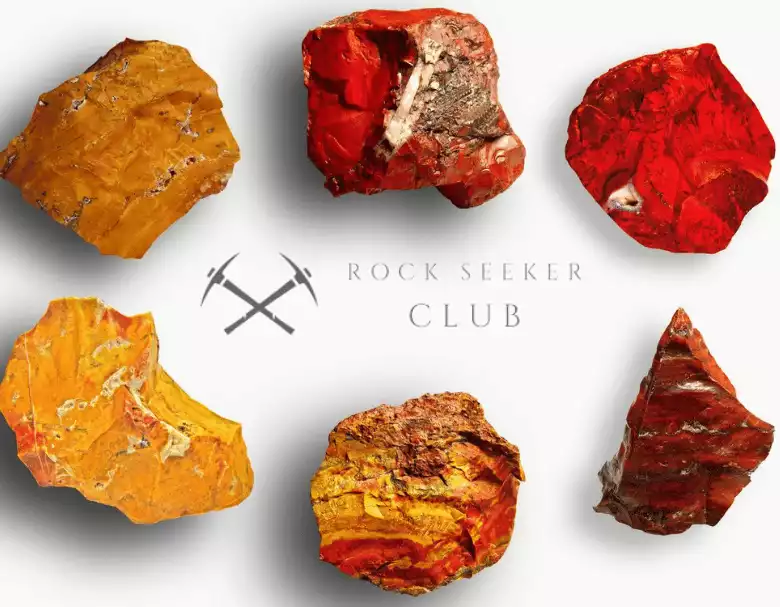Citrine is among the most desirable of gemstones. A semiprecious stone with color that ranges from pale yellow to deep orange, it’s a favorite for many collectors of both specimens and jewelry.
Amethyst, with a dreamy purple color, is another one of the most sought after semi-precious gemstones. There’s just something about it, no matter what form it takes, that draws people in. It’s a great stone for collectors as well, due to natural variations in the stone.
However, natural occurring citrine is relatively rare since it requires higher temperatures to form. While at the same time amethyst is plentiful. And it has become a common practice to heat amethyst to the point where a change in coloration occurs, causing the heat treated amethyst to look just like citrine.
If you’ve set out to learn the difference between heat treated amethyst and citrine, then keep reading.
What is Amethyst?

Amethyst is macrocrystalline quartz with iron inclusions that cooled below 420° C(788°F) with a purple coloration. Another 20°C and the formation could have been citrine, and if the crystals form between 420°C and 440°C then the final form is prasiolite.
For most of us, the main form of amethyst is in geodes and crystal points. Both are common in the rock trade, and amethyst geodes range from golf ball-sized to bigger than a person! Since they’re relatively common you can find very affordable specimens of middling quality without difficulty.
The coloration is formed from natural radiation and trace amounts of Fe₃+ ions.
Amethyst can be a valuable gemstone in its own right. Properly faceted amethyst with deep saturation and high clarity are prized for making jewelry.
Amethyst is known for “color zoning” within it’s crystals. It’s common to see darker and lighter splotches of purple in the stone, for instance, and sometimes clear quartz is in there as well.
What Is Citrine

Citrine is a variety of quartz that’s colored yellow to orange. It’s almost identical in physical makeup to amethyst, but differences in the original formation of the crystal cause it to take on a different color.
Quartz is silica, SiO₂, with a macroscopic crystal form. Silica makes up a large amount of the earth’s crust, and quartz is one of the most iconic crystals around. It’s known for its hexagonal shape and sharp terminations at the end of the crystal.
Citrine is a form of quartz that has iron in the color centers of the crystals. Depending on the formation temperature of the stone, you end up with one of three different forms of quartz. They are amethyst, prasiolite, and citrine respectively.
Please note that there are a few trains of thought on how citrine acquires its color. The above is the most common explanation found, and the one I tend to agree with. There may even be multiple causes of the coloration.
Citrine is a gem name, not a scientific classification. As long as the gem is colored yellow or orange through, and not just on the surface by something like ferrous oxide, it can be called citrine.
Of these, prasiolite is the rarest since it forms only in a narrow band of temperature between amethyst and citrine. These crystals form at the following temperatures:
- < 420°C (788°F)- Amethyst
- 420°-440°C (788°-824°F)- Prasiolite
- >440°C (824°F) – Citrine
Heat Treated Amethyst vs Citrine
Natural occurring citrine is relatively rare since it requires higher temperatures to form. The charge of the Fe ion changes with temperature, altering the color of the stone.
It should be noted that citrine is very rare in nature, unlike amethyst. With its desirable coloration, we’ve got a problem on our hands for collectors it has become a common practice to heat amethyst to the point where a change in coloration occurs, causing the heat treated amethyst to look just like citrine.
How To Tell Heat Treated Amethyst vs Citrine
Heat-treated amethyst is almost identical to naturally forming citrine. There are a couple of good indicators, but telling them apart isn’t always possible. Here are a few different things you can look at to help determine if what you have citrine or heat treated amethyst.
1. Check the Coloration
Colors are the biggest tell. If the stone is already faceted, you’re probably out of luck on finding out if the stone is natural in origin this way.
Heated stones will have color changes throughout them. The important thing to look for in the specimen is “burnt” looking tips to the crystals. No natural citrine is colored that way and it’s perhaps the most definitive way to find out a specimen is heat-treated amethyst instead of citrine.
Solid colors can also be a bad sign, especially if it’s through a relatively large piece. If the piece is a single uniform color then it may be man-made, especially if the price seems reasonable.
Heat-treated specimens will tend to be more on the orange-yellow side of things, while natural specimens often a gold or straw yellow instead. The difference can be subtle, and there’s also some overlap. As if this whole thing wasn’t confusing enough.
In general pale yellow specimens with color-zoning are the most common natural citrine.
2. Examine the Specimen’s Shape
One of the most common treated amethyst displays I’ve seen is crystal formations from the inside of large geodes. The majority of natural citrine samples will be smaller points or other formations, it very rarely forms in geodes.
You’re most likely to see smaller crystal formations. Citrine is often in the same formation as regular quartz, so clear bits aren’t a deal-breaker.
Just note that if it looks like it was cut from the exterior of a geode, chances are it’s not citrine. These specimens were very common in the rock trade not long ago and there are a lot of them bouncing around.
They still have other tell-tale signs but this is the quickest way to start identifying the piece.
3. Check for Dichroism
Some of the natural forms of citrine exhibit dichroism that amethyst does not. Dichroism is an optical effect created by the crystals, stones will shine with different colors depending on the orientation of the crystals.
This is a one-way test: dichroism can prove a stone is natural, but not having it doesn’t mean the stone is heat-treated.
Checking for dichroism requires a specialized tool, a dichroscope. These tools are valuable for gemologists since they allow quick ways to eliminate possibilities when checking stones out. A dichroscope is not a final test.
You can find one online if you don’t already have one. They’re a good tool to have around for any serious gem or crystal collector, and relatively inexpensive.
- Online rock and mineral club for collectors of all levels!
- Find community with like-minded rock and mineral enthusiasts.
- Monthly Giveaways!
- Free Access to Entire Digital Library of Products (annual memberships)


